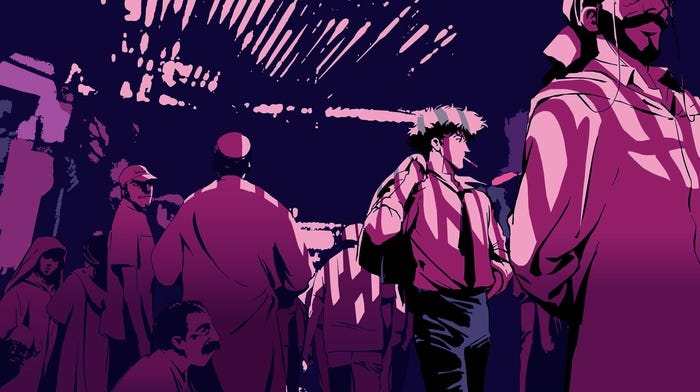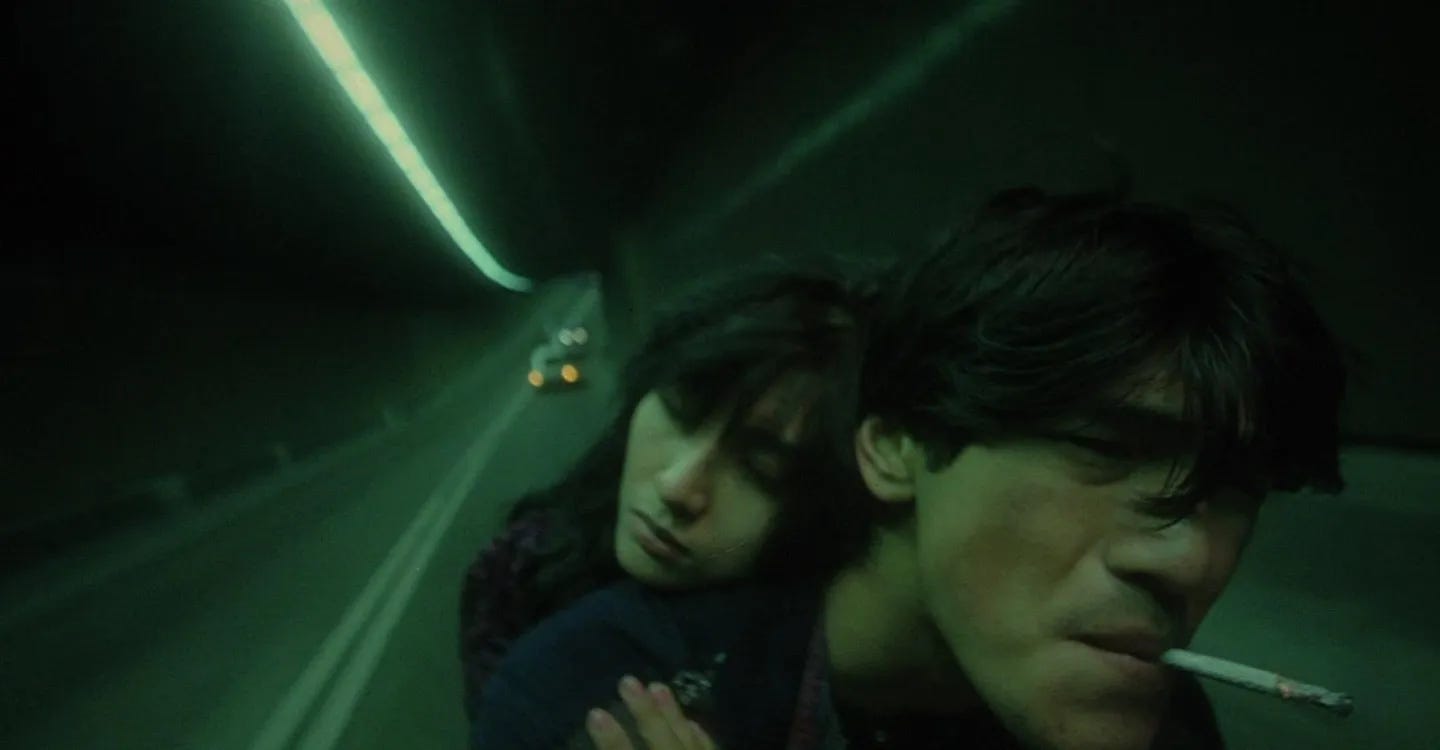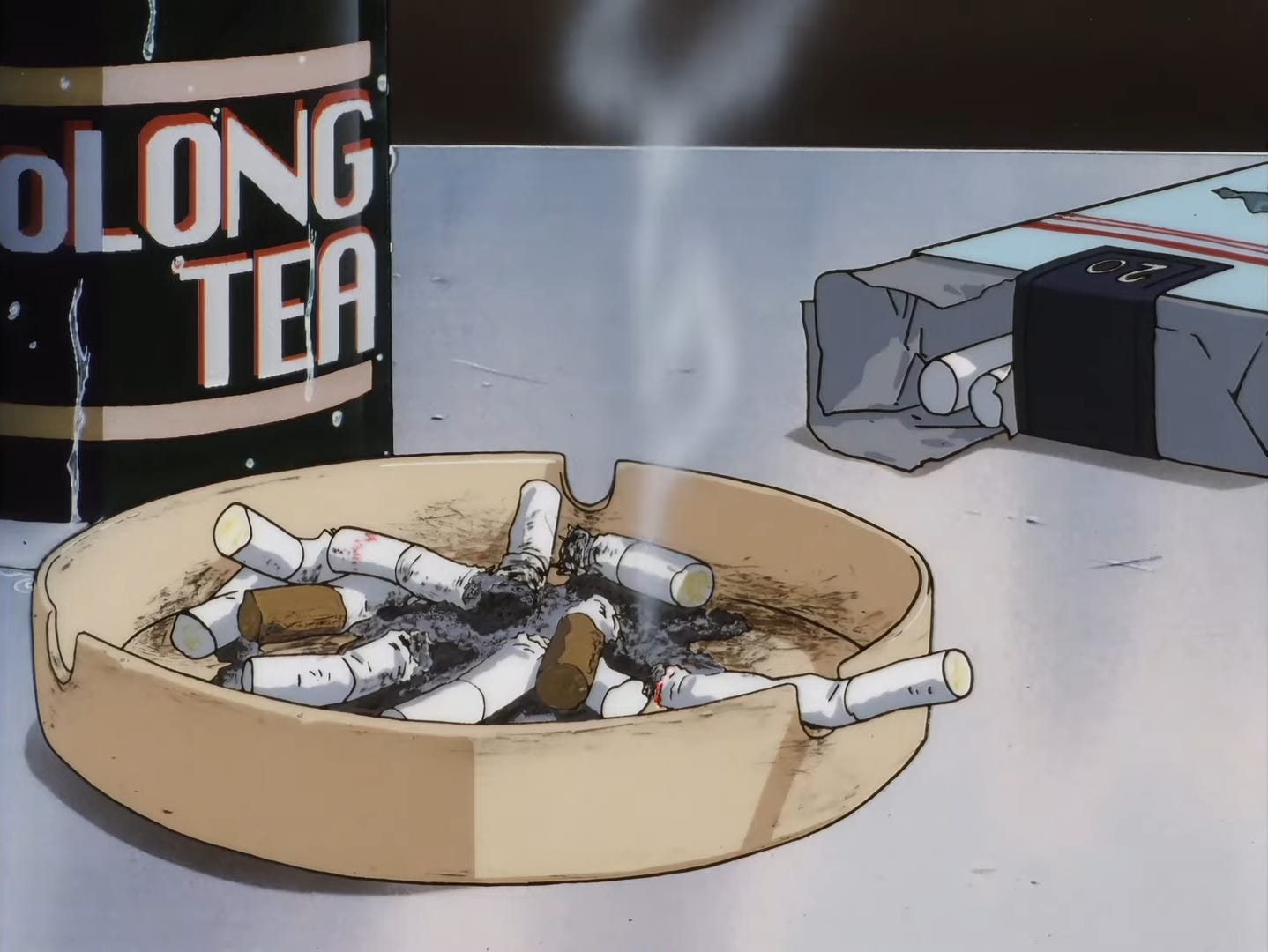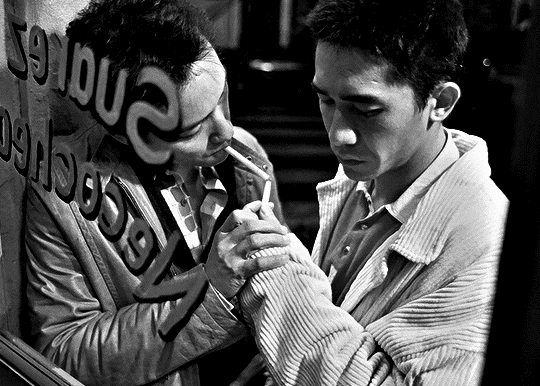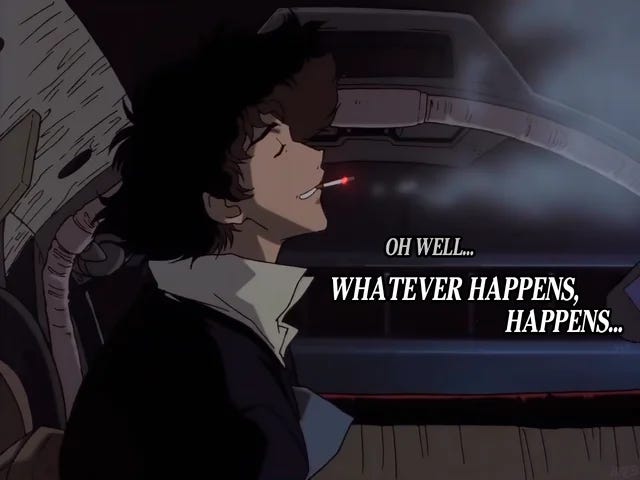Session #1: タバコの白昼夢 “Cigarette Daydreams”
Smoke smoke, Faye Faye. Puff puff, Faye Faye.
Being the product of the 1980s, both the films of Wong Kar-Wai and the episodes of Cowboy Bebop are filled to the brim with sequences of smoking and lighting up a cigarette.
While at first this may seem by-the-by, it is actually in this casualness that the significance of the act reveals itself.
The utter fixation on smoking, the inhalation, the ritualistic aspects of lighting one up, and gazing off-screen. These are fundamental to establishing an aesthetic quality to the sequences of both mediums.
A Vice for Life
The characters of Cowboy Bebop and WKW films smoke out of necessity. They’re addicts. This is never formally addressed but the sheer amount of nicotine intake these fictional folk accumulate is rather cartoonish (pun not intended).
The following are videos that detail every single sequence of smoking in both WKW and Cowboy Bebop, to fully illustrate the steadfast nature of this activity.
Video #1: They Smoke A Lot in Cowboy Bebop
Video #2: Wong Kar-Wai Smoking Scenes in his Filmography (Supercut) Pt. 1
Video #3: Wong Kar-Wai Smoking Scenes in his Filmography (Supercut) Pt. 2
In certain sequences they are literally smoking whilst masturbating, smoking while in the rain, eating cigarettes in a no-smoking zone, smoking whilst hiding in a closet, and the list goes on.
To many 21st-century readers/viewers, this may seem overly excessive, a waste of time and money. And yet the fact of the matter is, one cannot disregard the inherent atmosphere and “cool” factor smoking brings to these films and TV show.
The Iconography of Smoking
The manner in which the puffs of ash dance through the air in a haze cloud of greys and blues as the small fire burns its way to the dog end of a cig.
It’s enough to make me incur a lifetime loyalty deal for Marlboro Reds (jokes aside, brand loyalty is truly insane amongst cig smokers, a thing to behold for sure).
Due to the visual flair of both mediums, cigarettes work to be a perfect pairing to the dreamy neon-filled streets of Hong Kong, as well as the starry flashy worlds of Bebop.
Particularly with films such as 2046 or In the Mood for Love, the smoking even works to further dial in the themes of nostalgia and longing for bygone days (at least with modern audiences to be sure).
With Bebop, the utter abundance of smoking plays to its own themes of addressing the past whilst in the future.
The blend of contemporary fixtures (bullets, cigarettes, cup noodles, etc.) mixed in with the spaceships, laser beams, and astral gates all work to both physically and philosophically illustrate the aforementioned themes.
A Tool as well as Cool
Aside from the atmospheric qualities cigarettes provide, they also work as a means of convenient storytelling, via a casual past-time.
Both Cowboy Bebop and WKW take advantage of the universality of smoking to great effect, wherein smoking sequences either further the plot or further characterize specific characters in the show or film.
*SPOILERS AHEAD FOR HAPPY TOGETHER (1997)*
Happy Together by WKW makes use of sharing a cigarette as a means of illustrating the power struggle between the seductress Ho and the eternally vexed Lai.
There’s even a whole little subplot later on that relates to quasi-domestication, as Lai buys Ho about 3 cartons of cigs (about 30 packs) just to keep him from leaving the apartment and potentially cheating.
*SPOILERS AHEAD FOR COWBOY BEBOP SESSION #19*
Cowboy Bebop meanwhile uses cigarettes to build upon the established ideals of characters. Such as how Spike in Session #19 decides to light up a cig as his supposed final act, as he starts crashing down into the burning atmosphere of earth.
His quote, “Oh well . . . whatever happens, happens . . .”, reinforces the cool and laidback personality, he had always maintained throughout the entire series.
Even in the face of death, he smiles and sits back, letting it all pass through him like water, just as his idol Bruce Lee says.
“Cigarette Daydreams”
Since this is Session #1 of the series, I wanted to preface this section by saying that at the end of each article or video, there will be a title breakdown that will discuss why I chose the song/album I named the article by.
Session #1 is named after the Cage the Elephant hit single, “Cigarette Daydreams”, off their tertiary LP, Melophobia.
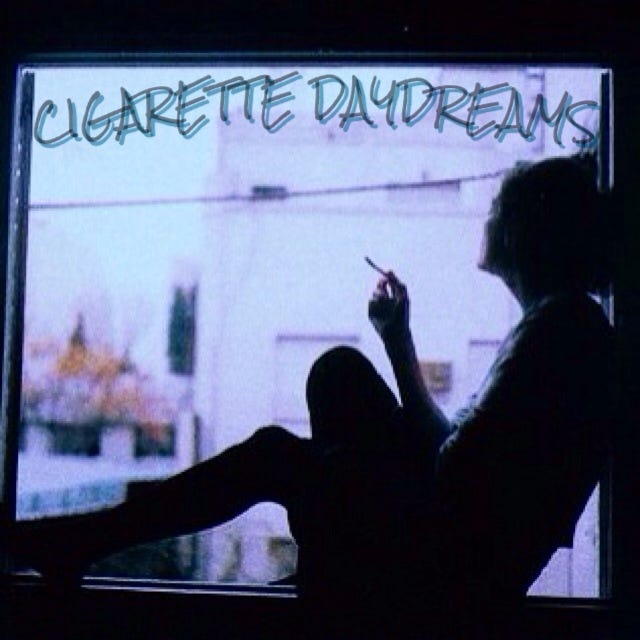
The song (in my opinion), perfectly describes the forlorn longing, and reminiscing of times past that sub-scores nye on the entirety of Wong’s filmography and the Bebop crew’s background.
The melancholic lyrics, coupled with the nostalgia-ridden undertones of the instrumental, work in tandem with the themes of regret and love in both mediums.
The track even references rain a lot, which ironically enough, is the theme of Session #2, of, In the Mood for Cowboy Bebop.
To end, I’d like to quote the song:
“Did you stand there all alone? Oh, I cannot explain what's goin' down. I can see you standin' next to me. In and out somewhere else right now.”


